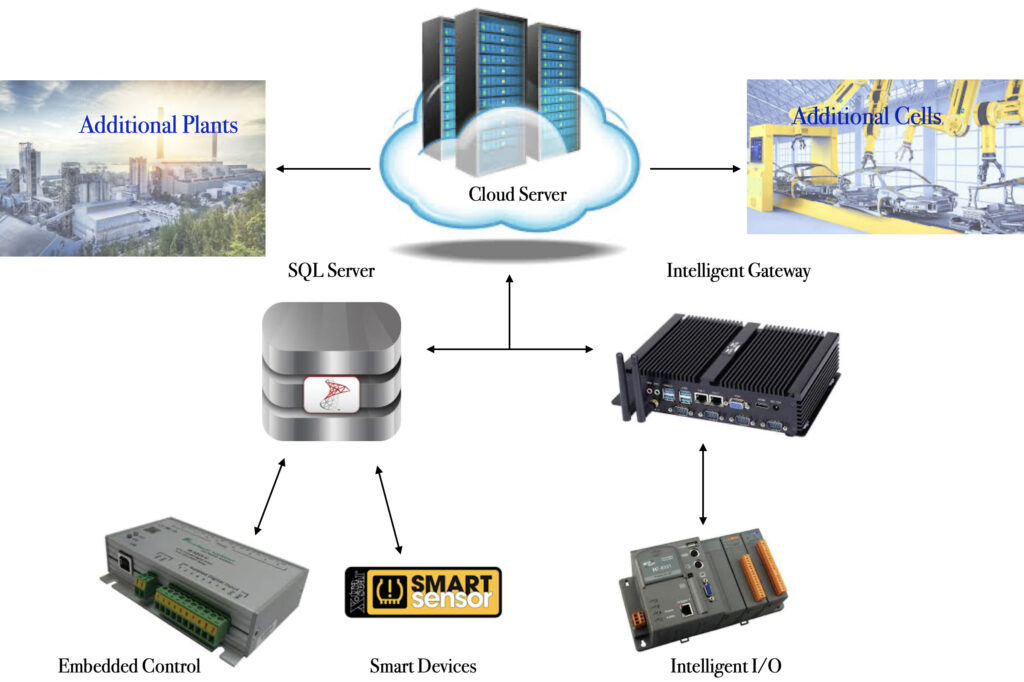System Architecture

Historically, system architecture within the automation sector has largely been dominated by a few players that have swayed customer offerings to meet their own objectives. A turf war of sorts. The IoT is beginning to level the playing field where a best of class set of offerings will be made available to the industry. Scalable, reusable and without legacy roots.
The IOe architecture is infinitely flexible in that it is object oriented. An application can be developed in the cloud server or a resident server. Either server can be given compete redundancy for the other. For our existing customers, their existing resident server can provide a migration path to the cloud.
When an application is built in the cloud, the entire system can be downloaded to one location or can be parsed to multiple locations based on local application needs. In this configuration, an intelligent gateway is utilized within a cell where a cell can be an entire plant, a subset of the plant or another physical entity like a pipeline.
An object can be built in one location and deployed to another with complete autonomy. It doesn’t even need to know it is part of the same cell. And objects can be instantiated where objects live in other objects where a super object might exist as a plant. If a plant is then replicated for another operation and (as an example, GE motors are to be replaced with someone else’s motor. All the application developer has to do is drag the old graphic representation of the motor object off the screen and replace it with the new one. The value of the IOe object oriented development capability in terms of reusability and associated cost saving cannot be overstated.
